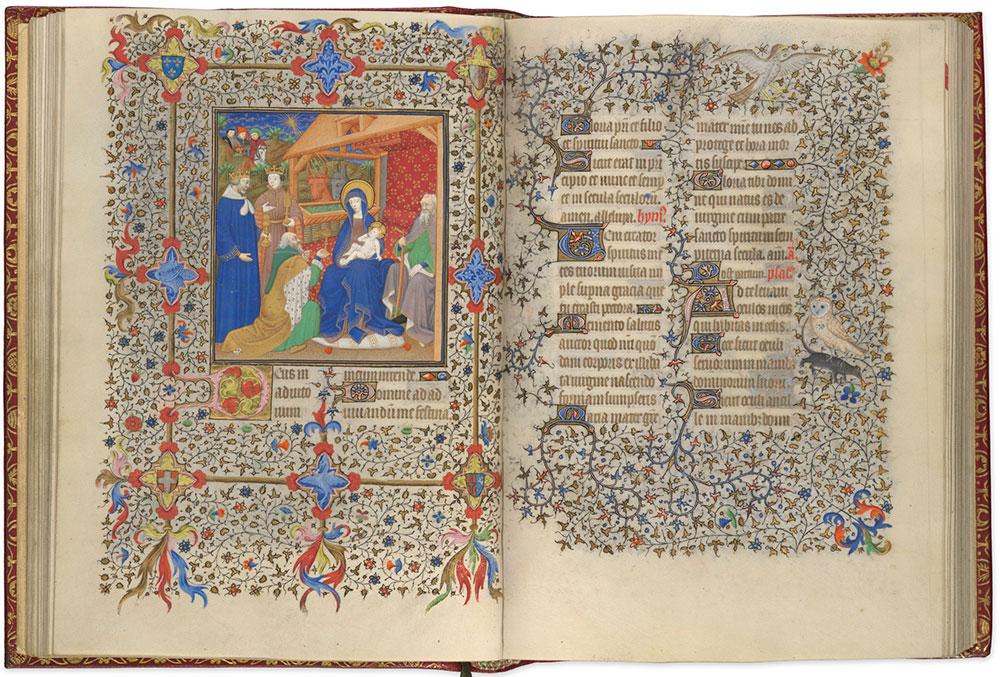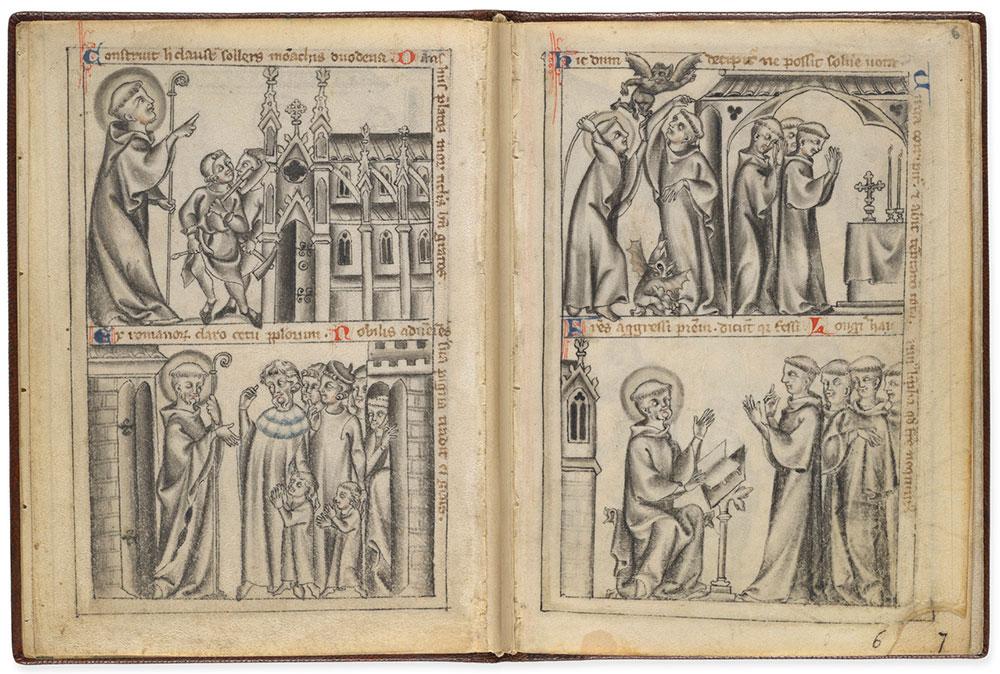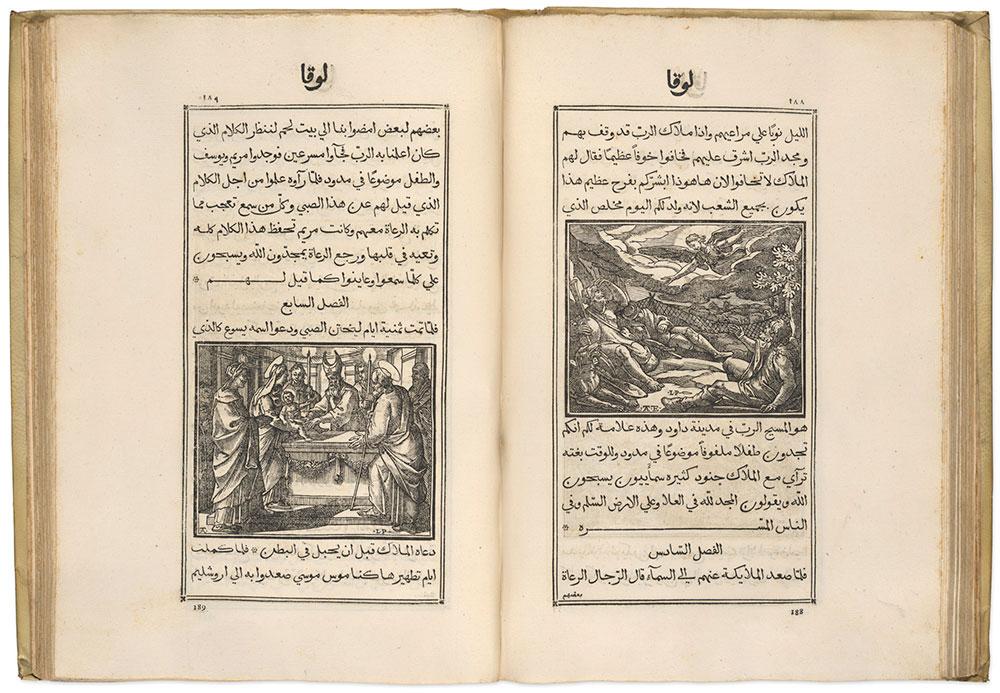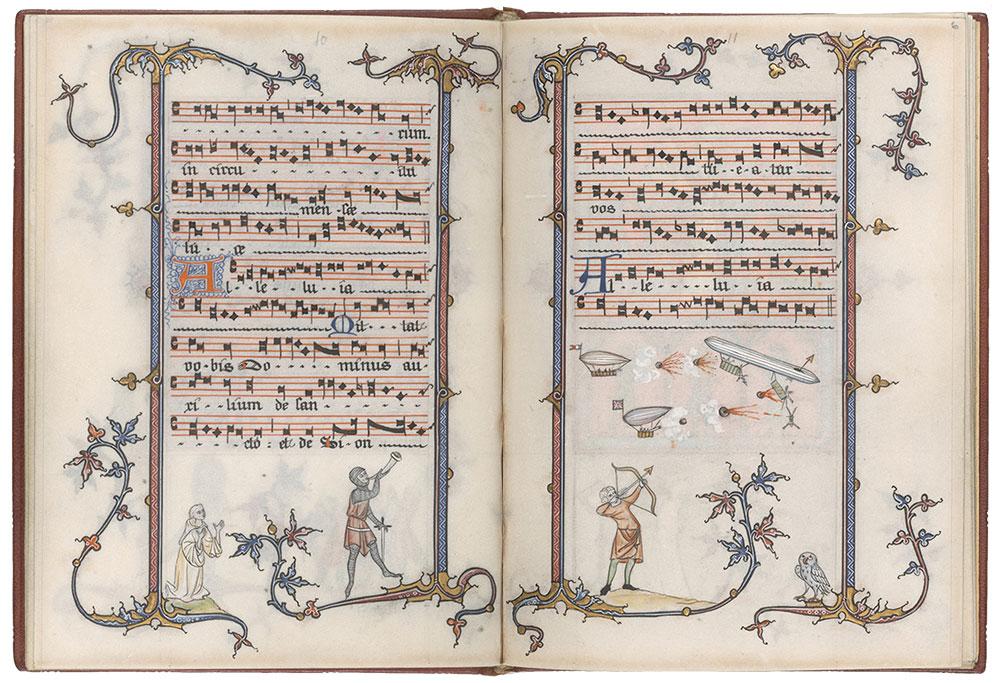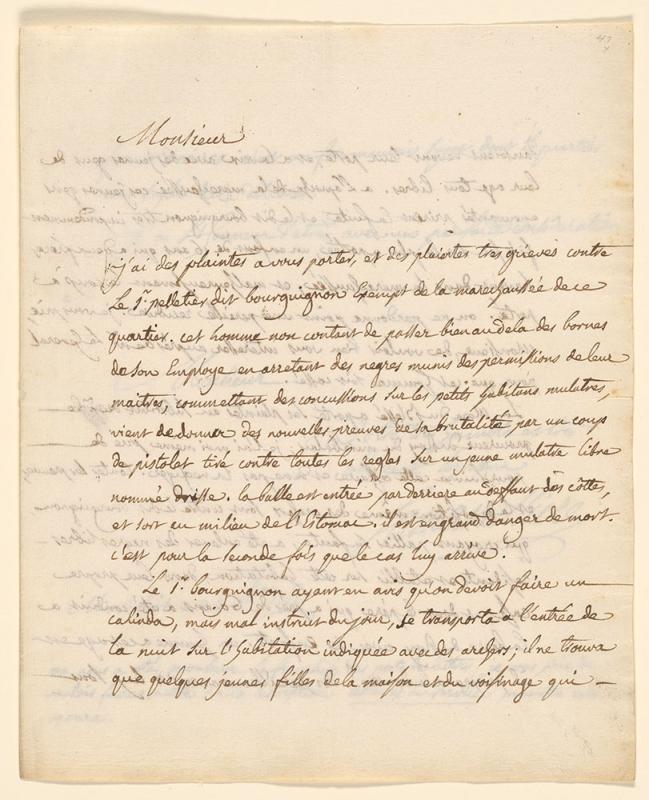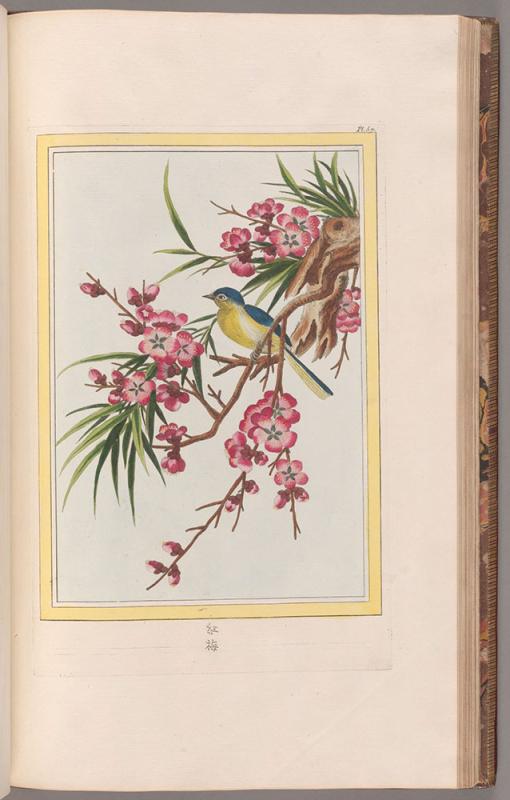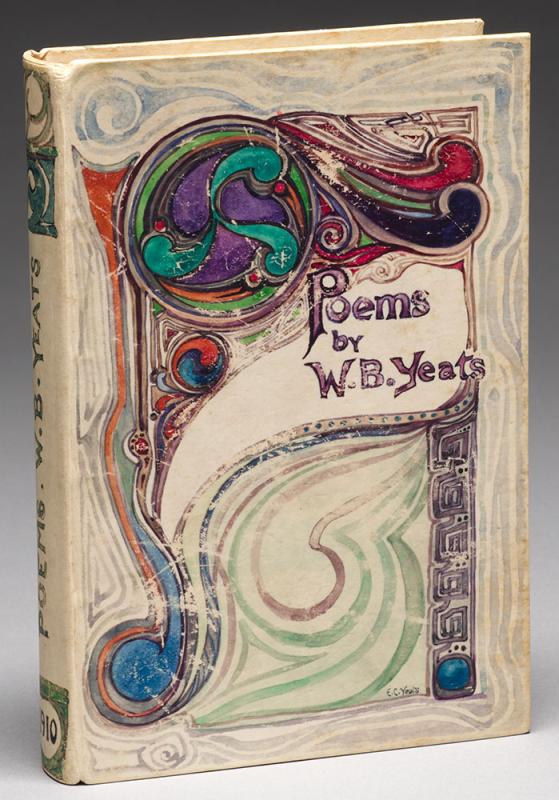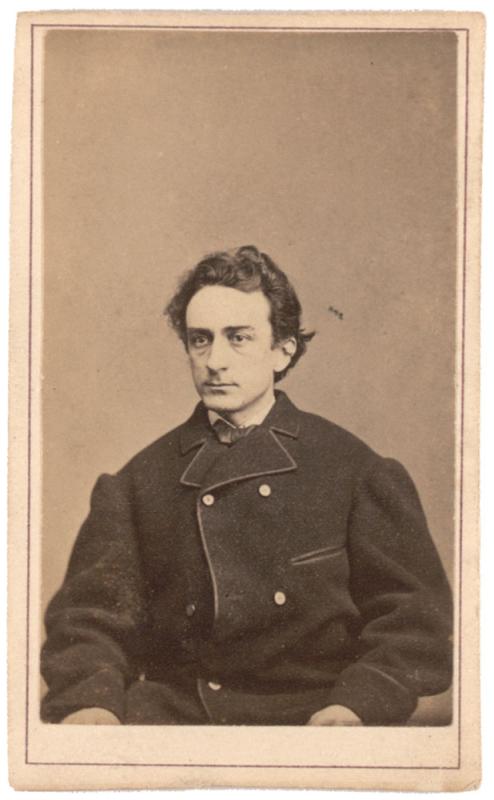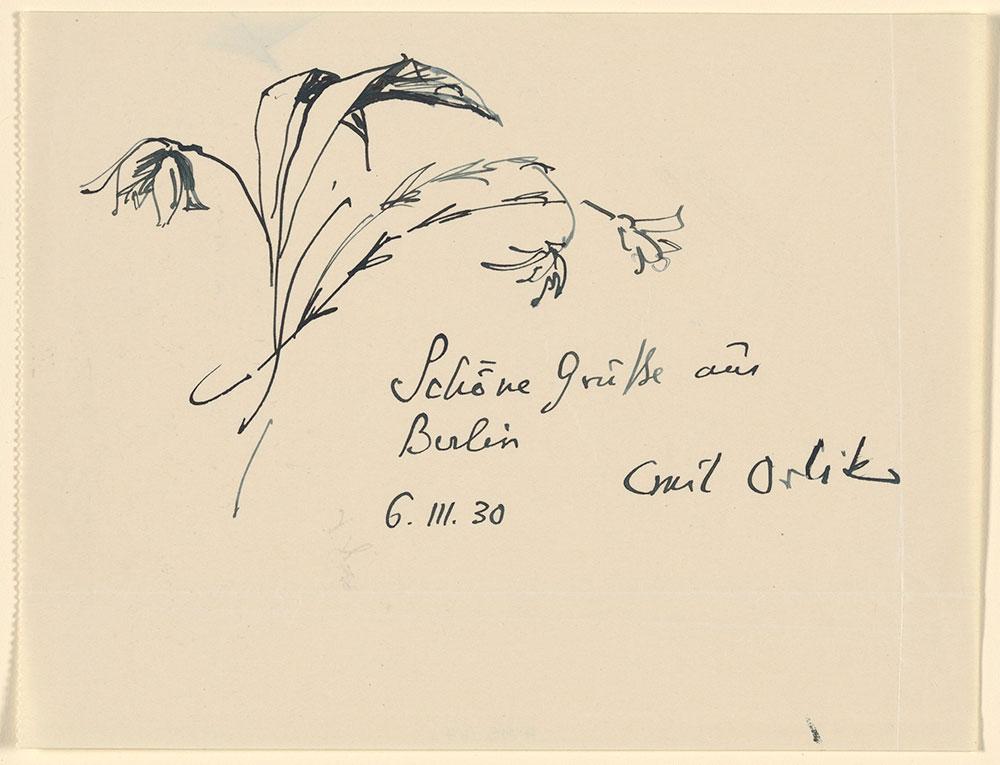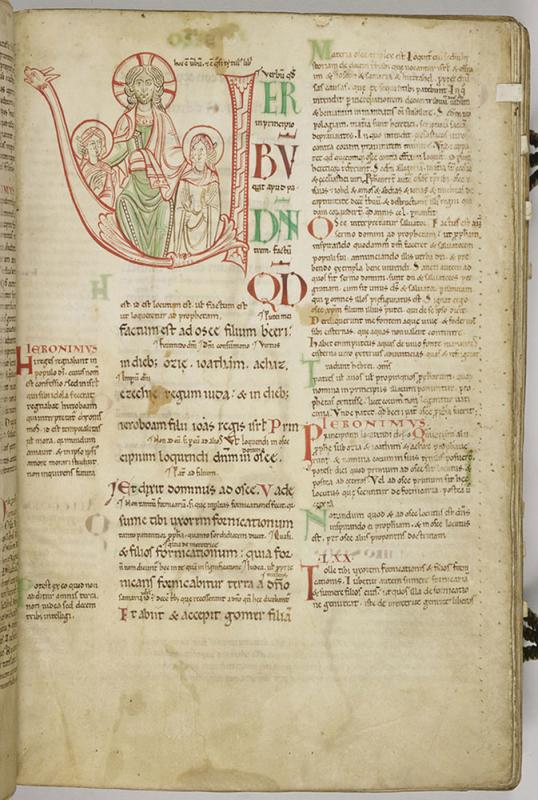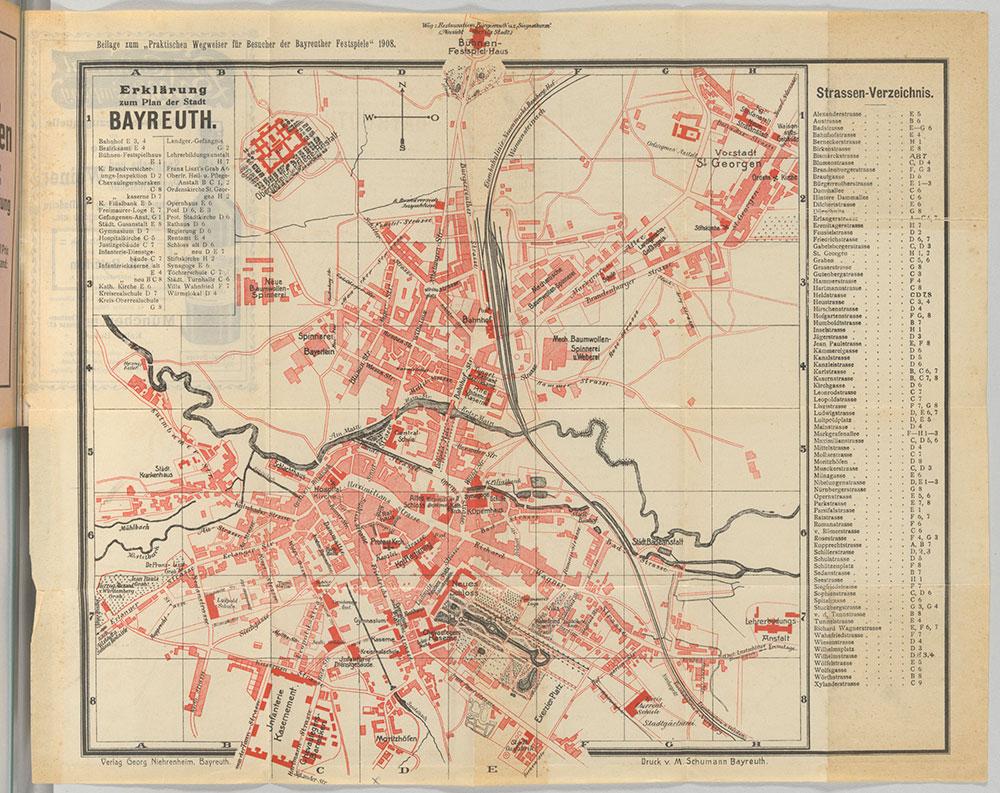Objects on view in J. Pierpont Morgan’s library reflect the past, present, and future of the collections in four curatorial departments, comprising illuminated manuscripts from the medieval and renaissance eras, five hundred years of printed books, correspondence and literary manuscripts, as well as printed music and autograph manuscripts by composers. These selections, which rotate three times a year, provide an opportunity for Morgan curators to spotlight individual items, to consider their historical and aesthetic contexts, and to tell the stories behind these artifacts and their creators. Here are some highlights of the rotation currently on view in the East Room. Also on this page are some of the objects displayed in the Rotunda as part of a thematic installation, Echoes of the Bard: Shakespeare in Nineteenth-Century Americana, featuring items from the Gilder Lehrman Institute of American History.
Fit for a Queen
The “hours” in this medieval book are not those recorded by modern timepieces but relate instead to the rhythm of eight daily prayers. Among them, the “Hours of the Virgin” were especially valued for their spiritual significance. The page on the left, at Sext (the sixth hour, observed around noon), shows the three Magi offering gifts to the Virgin with Child. The shields surrounding the miniature, with the heraldry of France and Savoy within quatrefoils, were likely added after 1451 to celebrate the marriage of Charlotte of Savoy and the future King Louis XI of France. The manuscript predates their union, but it was not uncommon for an older manuscript to be transformed or to receive additions when offered to a new owner.
The Departure of the Countess
Shelley wrote this novel, set in fourteenth-century Italy amid the wars of the Guelphs and Ghibellines, in the years after composing Frankenstein. Valperga traces the fortunes of Castruccio Castracani, a real historical individual, and the fictional Countess Euthanasia. Though they are from opposing families, they are childhood friends and later fall in love. But when Castracani attacks the fortress town governed by the countess, she must choose between her love for him and freedom. She chooses the latter and, on these pages, leaves her home with dignity: “She walked unfaltering through the hall, long the seat of her pleasure & happiness . . . and she thought for a moment she saw the venerable form of her father seated in his accustomed place.”
Image not available
Cemal Reşit Rey (1904–1985), Scènes turques, arranged for piano, 1928 (?), autograph manuscript. Gift of Robert Owen Lehman, 1970
Shakespeare and Truth
Sojourner Truth was born Isabella Baumfree to enslaved parents in New York and ultimately escaped to freedom in 1826. By the 1840s Truth had changed her name and was preaching about abolitionism and equal rights for all. In 1850 she dictated her autobiography, A Narrative of Sojourner Truth, to Olive Gilbert, as she had never learned how to read or write. The version here was published shortly after her death and contains additional engravings, correspondence, and a memorial chapter. Shakespeare is mentioned in the supplementary material, such as when abolitionist Wendell Phillips (1811–1884) refers to “Clarence’s Dream” (Richard III, act 1, scene 4) when describing his experience witnessing Truth’s oratory.
Scenes of Turkey’s Aegean Lands
Rey, a child prodigy, studied in Paris with Marguerite Long and Gabriel Fauré before returning to his native Turkey in 1923. There he founded the Istanbul Conservatory’s orchestra, directed Radio Ankara, and conducted the Istanbul City Orchestra. Known for joining Western classical with traditional Turkish music, Rey created scores for plays, films, and operettas, often collaborating with his brother, the writer Ekrem Reşit Rey. Scènes turques showcases several traditional styles. This piano version of the orchestral score includes two of the four movements. Both are zeïbek tunes associated with the Aegean region of Turkey. The first, marked in the score “Agir zeïbek,” is a slow (ağır) melody, while the second, “Yaruk zeïbek,” evokes music of the nomadic Yörük culture.
Seven Wives
Nizami’s Quintet was one of the most well-known compilations of poetry in the Persian-speaking world. One of the poems, Haft Paikar (The Seven Beauties), tells the story of King Bahram Gur. Its largest section is dedicated to the fifth-century king’s encounters with the titular beauties, who become his wives: seven princesses from the seven regions of the world. Miniatures in this manuscript show Bahram’s encounters with each wife in her personal pavilion, each painted a different color associated with one of the planets and a day of the week. Here we see him with the Chinese Princess Yaghmanaz in the Sandalwood Pavilion on Thursday. The pomegranates between them, one of them shown open near Yaghmanaz, are often associated with fertility in Iran.
Saintly Life
This small manuscript is the earliest extant, if incomplete, copy of an account of the life of Saint Benedict (circa 480–547) that Abbot Hermann de Burner first composed between 1260 and 1295. The illustrations were created through the technique of grisaille, in which shades of gray are used to produce effects of light and shadow. Each opening of this volume features four scenes with captions in verse. To the left, Benedict founds a monastery (styled as a fourteenth-century Gothic church), and welcomes a pair of child novices. To the right, the saint reprimands a monk who is tempted by devils, and hears complaints from his community.
Image not available
Wallace Thurman (1902–1934), "Cordelia the Crude," with illustration by Richard Bruce Nugent (1906–1997), Fire!! A Quarterly Devoted to the Younger Negro Artists, no. 1, 1926. The Carter Burden Collection of American Literature; PML 187342
Mission Typographical
The Medici Press, founded in Rome in 1584, published the first Arabic and bilingual translations of Christian texts to distribute to Muslims in western Asia and the Mediterranean. Their edition of the Gospels in Arabic includes 149 woodcut illustrations. Shown here are depictions of scenes from the Gospel of Luke—the Annunciation to the Shepherds (right) and the Presentation in the Temple (left). The Arabic type was designed by Robert Granjon (ca. 1513–1590), who was also responsible for creating Civilité, the famed French typeface that resembled a Renaissance style of cursive. With experience creating sweeping italic fonts, Granjon skillfully rendered the fluid beauty of Arabic letterforms.
A Lesser-Known Artist of the Harlem Renaissance
Thurman founded the magazine Fire!! with other powerhouse figures of the Harlem Renaissance: Langston Hughes, Zora Neale Hurston, Aaron Douglas, Gwendolyn Bennett, John Davis, and Richard Bruce Nugent. Douglas, who designed the cover, was the group’s most celebrated visual artist. The illustration for Thurman’s story “Cordelia the Crude,” shown here, was created by Fire!!’s other signature artist, Thurman’s partner Richard Bruce Nugent—one of the few figures of the Renaissance who lived openly as a gay man. Recognized initially as a writer, Nugent produced textual and visual works that were distinguished by their experimentalism and the exploration of characters and themes tied to both Black culture and the LGBTQ community.
Wartime Art
From the inception of their workshop in 1893, the Benedictine nuns of Maredret, Belgium, drew inspiration for their creations from medieval manuscripts. These cloistered women finished the text and the main illuminations of this manuscript before German troops invaded their country in August 1914. Work resumed in a clandestine manner when the nuns began to populate the margins of the finished folios with neo-Gothic vignettes about the war. Here, to the left, a monk prays while a soldier blows a horn. On the right, an archer takes aim at a large zeppelin while other contraptions flying the flags of Great Britain and France engage in an aerial battle. The small owl evokes more playful medieval marginalia.
A Community Demands Change
This letter, sent by a French military administrator from eighteenth-century Haiti, is an extraordinary testament to a community’s resistance to police violence. In it, La Martillière reports that a local police officer named Pelletier has been aggressively arresting and extorting Black and mixed-race people in the area, with the harassment culminating in Pelletier shooting and seriously wounding a “free mulatto boy” named Drisse. He adds that the boy’s mother has filed a complaint with the deputy royal prosecutor in Mirebalais and that the entire quarter wishes to be rid of Pelletier. He urges that the case be pursued. We do not know the outcome of this appeal.
A Plum of a Book
Buc’hoz was a French doctor, botanist, and artist with a deep devotion to natural history. He was inspired by watercolors and other artworks imported from China, then very popular in Europe, when producing this botanical. Volume one includes flowers indigenous to China, frequently enlivened with native birds or butterflies, while European flora occupies the second volume. The plate here depicts a red plum in full bloom with a brightly colored green shrike-babbler. Below, the Chinese caption identifies the blossom. Dr. Peter Goop donated this work to the Morgan in commemoration of the exhibition of his herbal book collection, Seeds of Knowledge, on view from October 6, 2023.
What’s in a Game
These playing cards—issued uncut and uncolored—were intended to teach children geography. Winstanley reinforced hierarchies of race, class, and color symbolism in early modern Europe both in his texts and in his correlation of the four suits with peoples of the world. He assigned red to Europe (hearts), evoking biblical symbols of purity and strength; Asia’s red suit (diamonds) suggests the precious metals, silk, and spices driving intercontinental trade. Regions inhabited by Black and Indigenous peoples make up the black suits—Africa (spades) and the Americas (clubs)—proliferating ideas intrinsic to early Christian rhetoric, which viewed the color black and, by association, Blackness as the enigmatic antithesis of European Whiteness.
A Hand-Painted Binding for her Brother
The painter, author, and art educator Elizabeth Yeats was one of three talented siblings of the Irish poet W. B. Yeats. Encouraged by William Morris’s printer, Emery Walker, she studied at the Women’s Printing Society. She cofounded the Dun Emer Press and the Cuala Press with her sister Lily. Both presses favored the plain style of trade bookbinding popularized by Morris and other Arts and Crafts publishers. On this copy of her brother’s poems, however, her hand-painted decoration evokes her family’s involvement in the Celtic Revival of Irish culture and crafts. Its large design (perhaps a P for “poems”?) resembles capitals used in Ireland’s great treasure, the medieval manuscript known as the Book of Kells.
Family Drama
Widely regarded by theatrical historians as the preeminent American actor of his era, Edwin Booth left an indelible mark on American theater with his captivating performances of Shakespearean plays across the United States and in prominent European cities. Born in Maryland, he was the child of Junius Brutus Booth, from whom he received substantial dramatic training. The tragic event of April 1865, when his brother John Wilkes Booth, also an actor, assassinated President Abraham Lincoln, plunged Edwin’s career into a hiatus. He returned to the stage by 1866, in an attempt at reclaiming his former reputation. By the time he declared his retirement in 1891, he had firmly established himself as a paragon of theatrical excellence.
Ravel’s Musical Algorithm
This virtuosic piano showpiece, whose title means “play of water,” shimmers with repeating rhythms and shifting harmonies, evoking the movement of light on a fountain’s cascade. While the music takes inspiration from Franz Liszt’s Jeux d’eau à la Villa d’Este (published in 1842), Ravel dispenses with grand romantic spectacle, instead depicting the fountain as if it were governed by an intricate algorithm, outside of human imagination or desire. The inscription at top, added at Ravel’s request by the poet Henri de Régnier, reads, “Dieu fluvial riant de l’eau qui le chatouille” (“River god laughing at the water that tickles him”). The line captures the sense of delight and pleasure that infuses Régnier’s poetry, a fitting counterpart to the playfulness of Ravel’s score.
First Female Poet Laureate
Bogan, the first woman to serve as poet laureate to the Library of Congress, leveraged her keen intellect to shape midcentury America’s literary landscape. Sent while she was laureate, this letter to Cahoon, a future curator of manuscripts at the Pierpont Morgan Library, recounts her experience attending a poetry reading hosted by lauded British American poet W. H. Auden. Detailing her impressions of Auden, Bogan shares, “He reads a little too fast and has enunciation difficulty; but he was wonderful in a long poem of Tennyson.” Both Bogan and Auden would go on to receive the prestigious Bollingen Prize in Poetry, in 1955 and 1953, respectively.
Spring Greetings
When the Czech painter and printmaker Orlik composed this note, he was at the end of a long and full career. For twenty-six years, he had led the department for graphic art and book illustration at the academy associated with Berlin’s Museum of Decorative Arts. In addition, he had designed costumes and theater sets, books, and posters by the hundreds. Early in his career, when Orlik was living in Prague, he had been deeply influenced by Japanese drawings and woodcuts, and he organized numerous lectures on the topic. It was due to Orlik that Franz Kafka and his peers became familiar with the minimal style and the focus on humble subjects that often characterized Japanese aesthetics.
Romanesque Prophets
This manuscript contains the books of the Twelve Minor Prophets, which are common to the Jewish Tanakh (Hebrew Bible) and the Christian Old Testament. The volume shown here represents their place in the Christian tradition. Religious precepts are highlighted by commentaries, in smaller writing, around and between the lines of the prophetic text. Red and green inks help distinguish sections of the work and are used for decorated initials, like the one seen here. The page shows the beginning of the book of Hosea, with a large V that ends in a dragon’s head. Within the initial, Christ (at center) enacts the reconciliation of the prophet with his unfaithful wife, Gomer.
Shakespeare in the Park
In 1864, for the tricentennial of Shakespeare’s birth, a group of actors and theater managers, including the leading Shakespearean actor Edwin Booth (1833–1893), established a committee to construct a monument to Shakespeare in New York’s Central Park. They held a competition and ultimately chose a sculpture by John Quincy Adams Ward. Shown here is the original agreement setting the terms of the commission. The full-size statue was cast in 1870 at the Robert Wood & Co. foundry in Philadelphia and unveiled in 1872. While some hailed the work as a dignified representation, others criticized its overly theatrical costume. The sculpture remains in the park today.
Tourist Map for Wagner’s Bayreuth
When King Ludwig II of Bavaria, a patron of Richard Wagner (1813–1883), insisted that two of the four operas in the composer’s Ring cycle be premiered separately from the full cycle, Wagner searched for a venue that would allow him creative control. In Bayreuth, a small town north of Munich, he found an eighteenth-century opera house with the largest stage in Germany. Its pit, however, was still too small for his vast orchestra, so he had a new theater built to his specifications, where his operas have been performed ever since. This 1908 guidebook is complete with leitmotifs from Wagner’s operas (snippets of melody or harmony corresponding to each character or theme), as well as local hotels and attractions. Wagner’s theater, the Festspielhaus, appears at top center.

J. Pierpont Morgan's Library

